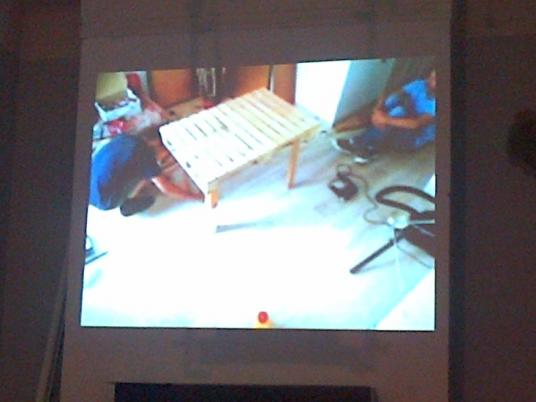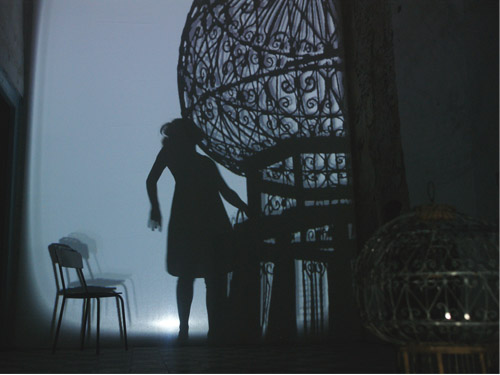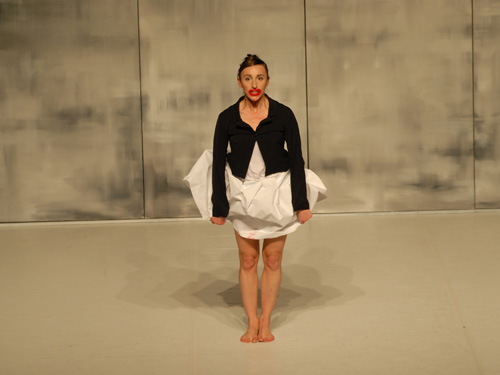
Over the past three years, Igor Dobricic has built eight tables in various cities with people he largely didn’t know beforehand. He relies on them for tools and materials, and ends up eating dinner with them on the table, which he defines as “something elevated to a certain level, stable enough to eat on.”
Dobricic is a Belgrade-born, Amsterdam-based dramaturge and teacher. He is in Egypt for the first phase of this year’s TransDance festival – two weeks of performances in Cairo – which launched Tuesday night at the British Council. The festival has various themes and aims, but one of its main concerns is to push at the borders of what performance can be.
Dobricic describes his table building events as “a very lazy project, a project which consists only of an invitation.” He leaves his host institution to do the inviting because if he did it, “that would be a form of design.”
This kind of participatory work has many predecessors in both theater and visual art, often involving food. In the 1970s, artists such as Gordon Matta-Clark and Al Ruppersberg opened art restaurants. In the so-called “relational aesthetics” movement of the 1990s, interactivity was meant to enable encounters that led to a collective elaboration of meaning. The Thai artist Rirkrit Tiravanija, for example, would serve food to gallery audiences. And Egypt’s late Amal Kenawy served pasta as part of her piece “The Silence of the Lambs” in 2010.
Twelve people showed up at Cimatheque Alternative Film Center in downtown Cairo on Wednesday evening, and Dobricic talked about his practice and the table building project. On Thursday evening, he will be collaboratively building a table, talking and eating with anyone who decides they want to go along.
“Is this a table building workshop?” asked one attendee, suggesting that a more “artistic” object such as a statue might serve better.
Dobricic replied, “I would be careful making this distinction between function and aesthetics … There is a platonic idea of a table, then there is the object, which is always specific, and in its specificity it has an aesthetic quality – even if it is ugly.” He pointed out that this was a problem of European modernism, which privileged objects’ functionality – “at the apex of functionality, it became purely aesthetic.”
The project, he said, is designed to explore the relations between object and subject and between making an object and making a performance, as well as that between aesthetics and functionality.
He referred to the history of philosophical materialism, in particular Lucretius’ poem “On the Nature of Things,” which was written in first century BC Rome, then rediscovered during the European Renaissance, and which has been described as “the source of modernity.” In it, Lucretius proposes that the world exists without gods or life after death. He speaks of atoms falling vertically in an infinite space, never meeting, until suddenly one atom swerves and the process of creation starts.
Dobricic said he finds this idea of the accident of an atom’s swerve leading to the appearance of everything that exists “very touching, in a very human way” and “almost religious.” He said it is something he encounters in his everyday life, not only in terms of meeting people but also in encountering materials.
He related this to his collaborative table building project. “People who don’t know each other meet. They are not professionals, they are not united by their history, skills or friendship.” Out of it, “something appears that has its own existence.” He described the process as an “endless proliferation of awkward attempts” and contrasted that with the moment when the table – whatever it might consist of – emerges, and the participants all spontaneously fall silent and look at it.
He said the project also confronts a mistaken idea of the power of authorship, and returns dignity to materials. The materials tell you what you can do with them, he said; you cannot impose your vision of what they should be. He mentioned Brian Massumi’s description of the relation between the woodworker, the wood and the plane at the beginning of “A User’s Guide to Capitalism and Schizophrenia.” The wood is not passive and “the woodworker brings the qualities of the wood to a certain expression.”
The discussion was held entirely in English, without a translator, and the subjects discussed – at one point linguistic constructions of ownership – meant that the attendees who were non-native speakers could only follow it if they had a very high level of English. But, presumably, when actually building the table, the conversation is likely to be quite different and less central to the experience.
For Dobricic, this project explores the point at which “my idealism about art reveals itself: the work of art does not belong to the artist.” Hopefully this idealism will transmit itself through the awkward moments of the table building to whoever shows up for the ride.




